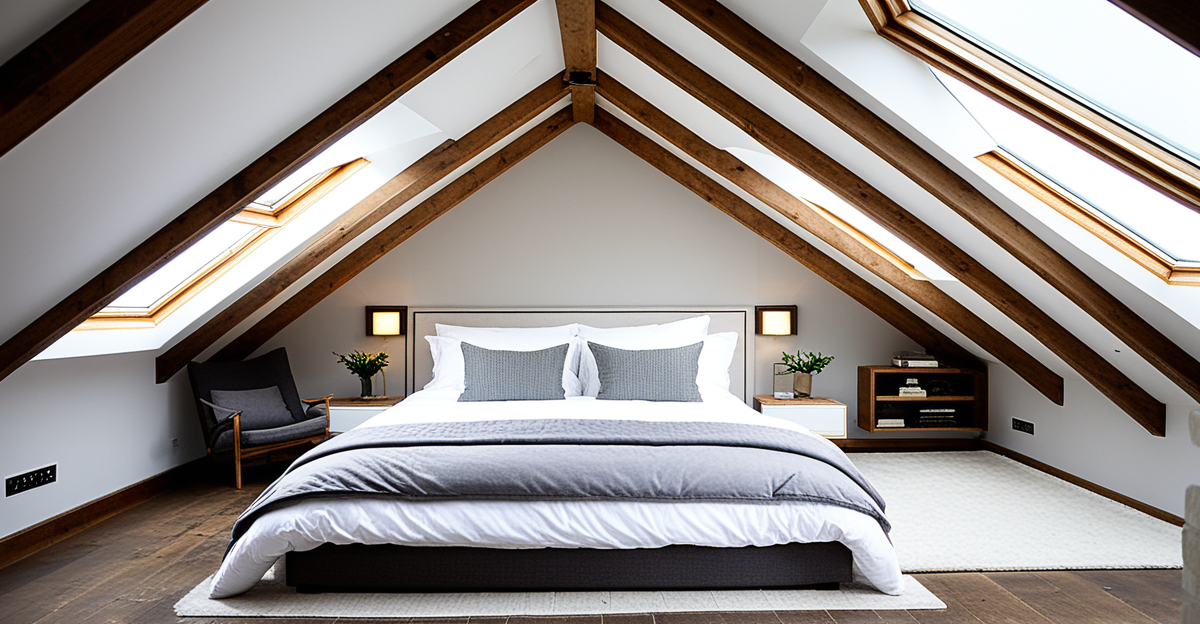Should you hire a loft conversion architect? find out here!

Deciding whether to hire a loft conversion architect can shape your project’s success. Their expertise goes beyond design, handling planning permissions and maximizing space potential. Specialized firms, like Touchstone Lofts, offer tailored solutions and streamline the entire process, saving time and avoiding costly pitfalls. Understanding their role helps you make an informed choice that balances creativity, compliance, and budget effectively.
Key Reasons to Hire a Loft Conversion Architect for Your Project
For most homeowners, the Architect for loft conversion is not just a formality—it's a vital step toward maximizing the value and usability of their attic space. This page explains it in detail: Architect for loft conversion. An architect’s involvement means your conversion is tailored to exact needs, from optimizing awkward layouts to navigating building regulations and planning permission advice efficiently. Their trained eye can spot structural issues early, propose innovative loft conversion design ideas, and ensure compliance with regulations that DIY efforts or builder-only projects frequently miss.
Also read : How to Establish a Personal Financial Plan for Retirement in the UK?
Professional architectural design for lofts boosts both function and property value. Architects manage every detail, from securing building regulations for loft conversion to customizing layouts for new bedrooms or offices. They streamline the architect consultation process by liaising directly with local authorities, reducing the risk of costly planning refusals or enforcement actions, and offering realistic cost estimation for loft redesign so budgets stay on track.
Without specialist input, common pitfalls include inefficient use of space, inadequate insulation, and missed legal requirements that undermine both comfort and future saleability. Choosing expert support helps transform unused lofts into practical, comfortable rooms that genuinely enhance your home.
Have you seen this : What Are the Key Drivers for the Growth of UK’s Vegan Food Market?
The Architect’s Role in the Loft Conversion Process
Precision in architectural drawings for lofts lays the foundation for a successful transformation. Architects begin by conducting an initial consultation to gain a clear understanding of your needs and mapping the existing roof structure. Using bespoke design software, they generate detailed plans and 3D loft design visualization. This step ensures layout options and potential obstacles are visible early, supporting both imaginative and practical loft conversion design ideas.
Compliance with building regulations for loft conversion is the next vital stage. Architects assess how regulations may impact your layout, guide on necessary permits, and drive the architect role in planning approval. Their expertise streamlines permit application support and maximizes the chance of approval, reducing the risk of costly redesigns. They also help manage the loft conversion project timeline by anticipating regulatory timeframes.
A key advantage is thorough attention to loft conversion structural safety. This involves the architect working closely with structural engineers to verify the attic floor, roof reinforcements, and openings meet legal and safety standards. Effective engineer and architect collaboration often leads to innovative solutions, like maximizing headroom or integrating natural light via dormers and skylights, all while satisfying both structural and regulatory needs. This teamwork underpins a safe, enduring loft space utilization.
Project Types, Cost Factors, and Tailored Design Solutions
Dormer, hip-to-gable, mansard, and rooflight conversions are among the most popular loft extension ideas, each offering unique benefits in loft renovation planning. Dormers maximize internal space, while hip-to-gable styles suit homes with hipped roofs, creating square footage ideal for multi-functional loft rooms. Mansard conversions, though complex, allow for significant layout flexibility—making bespoke loft design possible for even the most challenging roof structures.
Cost estimation for loft redesign hinges on several core factors. The type of conversion is primary; for example, a simple rooflight project lowers cost breakdown, while mansard or hip-to-gable conversions, which require more extensive structural alterations for lofts, increase overall investment. Additional features—like bathrooms or offices—raise costs, as do material upgrades aligned with modern loft design trends.
Tailored solutions thrive on skilled architectural input. Project examples show that specialist architects combine architectural drawings for lofts with 3D loft design visualization, resolving awkward layouts and maximizing natural light in loft. Whether integrating innovative storage or creating an open loft bedroom, each project demonstrates how thoughtful design enhances real homes—backed by clear architect fees explained and detailed loft conversion cost breakdowns.
Navigating Regulations, Choosing the Right Architect, and Maximizing Project Value
Building regulations for loft conversion must be assessed before any design begins. All loft conversion legal requirements—including fire escape routes, structural safety, and insulation—apply regardless of property type. While many projects fall under permitted development, structural alterations for lofts that extend beyond space or add major features will require full planning permission advice and may trigger further local authority liaison. For most UK homes, adhering to permitted volume limits (4m³ for terraced, 5m³ for detached/semi-detached) is key. If your design affects a shared wall, a party wall agreement is essential.
Choosing the right architect is a foundation for a successful residential loft transformation. Look for solid architect credentials and qualifications: RIBA membership or ARB registration signal professional standards in architectural design for lofts. Experienced architects will guide you through the architect consultation process, offering clear cost estimation for loft redesign and transparency about professional architect fees, which generally begin around £5,000 in London.
Architect-led loft refurbishments add measurable value and smooth project delivery. Expert insight supports loft building regulations for loft conversion compliance, optimizes loft space utilization, and ensures your loft extension ideas work in harmony with your property. Engaging the right advisor can increase the impact of loft conversion on house value and prevent costly errors at every milestone.
